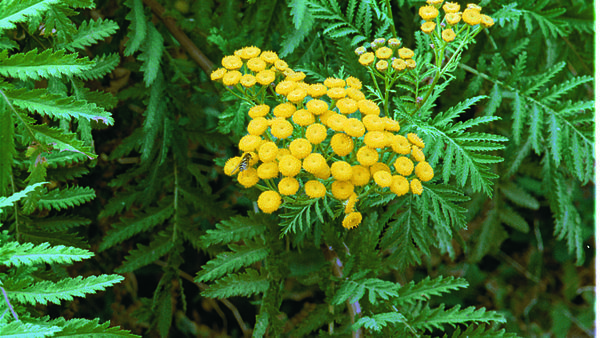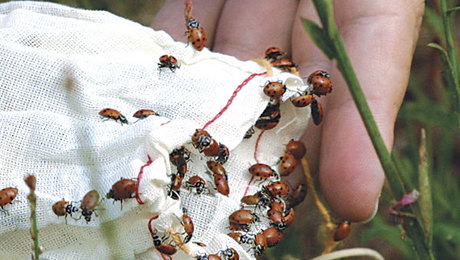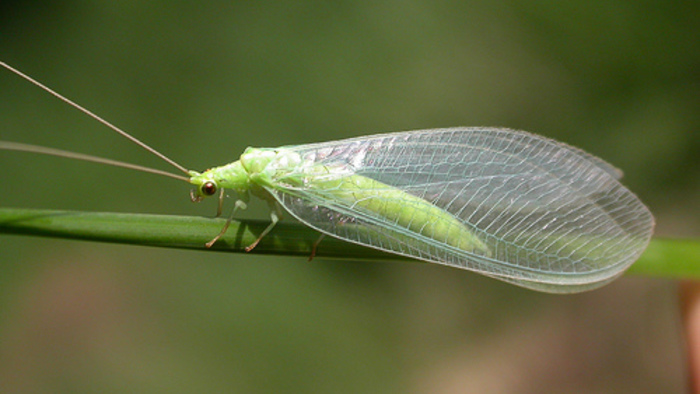Green lacewings are slender, bright, green-bodied flies that have massive appetites and use their big, sickle-shaped mouthparts to consume soft-bodied insects like aphids, thrips, white flies, and spider mites, as well as small caterpillars, insect eggs, and many other pest species. They are delicate but very beneficial to the garden. These insects are common in the spring, summer, and fall seasons. Natural predators that will eat anything they catch, they can decrease moderate aphid infestations as well as help control many other pests. The best part about these insects is that they do not affect plant health, nor do they bite or sting. In this video, horticulturist Steven Ash explains the advantages of having green lacewings in your garden.
Tips for purchasing and releasing these beneficial insects
Lacewings are available to purchase at many reputable garden centers. Generally, you’ll find eggs you can buy in bulk or glued to a little card you can hang onto a plant. When the eggs hatch, the lacewing larvae will begin feeding on aphids or other soft-bodied insects.
Adult green lacewings feed on pollen and nectar from plants such as sweet alyssum (Lobularia maritima, Zones 5–9). They’ll also feed on honeydew (produced by aphids).
When releasing bulk lacewing eggs, take some of the eggs and tap them onto a 3×5 card. Wedge the card among your plants. If you have a card that already contains eggs, simply wedge it into the plants. As they hatch, the larvae will crawl out onto the plants and consume the soft-bodied pests.
Things to keep in mind before releasing lacewings
Aphids and other honeydew-producing pest insects are often protected by ants, so if you don’t control the ant population, the ants will kill the lacewing larvae and eat the eggs. If you don’t have a garden center nearby that carries beneficial insects for sale, you can order lacewings (and more) from online sources. Lacewings are usually sold as eggs, but you may also be able to purchase larvae. If buying larvae, you can place them right on the plant next to the colonies they’re going to be feeding on and watch them eventually colonize the garden. Once they reach adulthood, the lacewings will start laying the eggs in aphid colonies, thereby repeating the pest-control process all over.
This video is a supplement to the 2013 edition of Common Sense Pest Control from Taunton Press.


















Comments
Log in or create an account to post a comment.
Sign up Log in